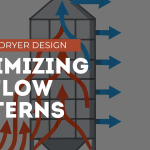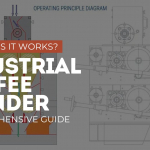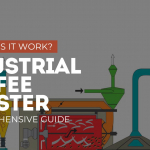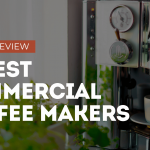Introduction: The Pivotal Decision That Shapes Your Operation’s Future
In the competitive landscape of agricultural processing, the choice between custom-built and standard off-the-shelf roasting systems represents more than a mere equipment decision—it’s a strategic inflection point that can fundamentally shape your business trajectory for years to come. This decision impacts not only your immediate capital expenditure but also your operational flexibility, product differentiation capability, and long-term financial performance.
The roasting system at the heart of your operation—whether for coffee, nuts, grains, or specialty seeds—becomes the cornerstone upon which production efficiency, product quality, and ultimately, market position are built. While the allure of customization promises tailored solutions to unique processing challenges, the reliability and proven performance of standardized equipment offers its own compelling advantages.
This analysis delves deep into the multifaceted cost considerations that extend far beyond the initial purchase price, examining how each approach influences your business across different operational scales and time horizons. By understanding the complete financial picture, operators can make informed decisions that align with both immediate constraints and long-term strategic objectives.
Total Cost of Ownership: Beyond the Price Tag
Initial Investment: Capital Expenditure Comparison
Off-the-shelf Systems:
- Small batch roasters (1-6 kg capacity): $15,000-$45,000
- Medium production roasters (10-30 kg capacity): $50,000-$120,000
- Large production roasters (60-120 kg capacity): $150,000-$300,000
- Industrial-scale continuous roasting systems: $350,000-$900,000+
Custom-built Systems:
- Small batch custom solutions: $30,000-$75,000
- Medium production custom designs: $80,000-$200,000
- Large production bespoke systems: $250,000-$500,000
- Industrial-scale custom continuous systems: $600,000-$1,500,000+
The price premium for customization typically ranges from 40-80% above comparable standardized equipment, reflecting the engineering resources, specialized fabrication, and one-off design work required. However, this premium must be evaluated against potential operational advantages that may justify the additional expenditure.
Installation and Commissioning Costs
Off-the-shelf Systems:
- Typically requires 2-5 days for installation
- Standard utility connections and space requirements
- Commissioning follows established protocols
- Installation costs: $5,000-$30,000 depending on size and complexity
- Often includes manufacturer support and initial setup
Custom-built Systems:
- Installation timeline: 1-3 weeks
- May require specialized utility configurations or facility modifications
- Extended commissioning and calibration periods
- Installation costs: $15,000-$75,000+
- Requires more extensive engineer presence and technical support
- May involve multiple iterations of testing and adjustment
The installation differential can be substantial, with custom systems requiring more extensive site preparation, longer commissioning periods, and more specialized technical support. Organizations must factor these extended timelines into production planning and cash flow projections.
Customization Possibilities and Limitations
Off-the-shelf Systems:
- Modular options with pre-designed upgrade paths
- Limited ability to accommodate unusual raw material characteristics
- Standardized control systems with some parametric adjustability
- Constrained physical configuration and spatial requirements
- Designed for industry-standard applications
Custom-built Systems:
- Purpose-engineered for specific raw materials and desired outcomes
- Adaptable to unusual facility constraints or utility limitations
- Completely customizable control systems and automation levels
- Can incorporate proprietary processing techniques or parameters
- Ability to integrate with existing unique production workflows
The value of customization must be quantified against specific operational requirements—custom features that don’t translate to measurable operational advantages become expensive indulgences rather than strategic investments.
Maintenance Requirements and Parts Availability
Off-the-shelf Systems:
- Scheduled maintenance intervals with established protocols
- Readily available replacement parts (often stocked)
- Service technicians familiar with common models
- Maintenance costs typically 3-7% of purchase price annually
- Standardized documentation and troubleshooting resources
Custom-built Systems:
- Often require specialized maintenance knowledge
- Limited parts inventory and potential for longer lead times
- Higher per-hour service costs for specialized technicians
- Maintenance costs typically 5-12% of purchase price annually
- More vulnerable to “tribal knowledge” dependencies
The maintenance differential represents a significant ongoing cost consideration that extends throughout the equipment lifecycle. Organizations must consider not only the direct costs but also the operational impact of potential downtime during parts procurement or specialized repair processes.
Training and Operational Learning Curves
Off-the-shelf Systems:
- Established training programs and materials
- Large user community and knowledge base
- Operator familiarization period: typically 1-3 weeks
- Often includes manufacturer training packages
- Easier to find pre-trained operators
Custom-built Systems:
- Requires system-specific training development
- Limited knowledge resources outside your organization
- Operator familiarization period: typically 4-12 weeks
- Higher knowledge transfer risk with staff turnover
- May require more skilled operators commanding higher wages
The productivity implications during the learning phase can be substantial, with custom systems typically requiring a more extended period before achieving optimal efficiency and consistency.
Energy Efficiency Comparisons
Off-the-shelf Systems:
- Published energy consumption specifications
- Predictable utility requirements
- Designed to meet industry-standard efficiency metrics
- Limited optimization for specific operating conditions
- Energy costs are a known quantity for budgeting
Custom-built Systems:
- Potential for purpose-optimized energy efficiency
- Can be engineered for specific energy sources or constraints
- Opportunity for heat recovery design specific to facility
- May incorporate emerging efficiency technologies
- Energy performance may require on-site validation
Energy efficiency differentials can significantly impact operating costs over time, particularly for high-volume, continuous operations where even marginal efficiency improvements translate to substantial savings.
Production Flexibility and Scalability
Off-the-shelf Systems:
- Defined production parameters and capacities
- Modular expansion options with known costs
- Limited adaptation to changing product requirements
- Standardized integration with pre/post processing equipment
- Predictable throughput and batch sizing
Custom-built Systems:
- Can be designed with future adaptability in mind
- Potentially accommodates wider product variety
- May allow for unique scaling approaches
- Customized integration with existing production lines
- Can be optimized for specific product development roadmaps
The value of flexibility increases proportionally with market volatility and product diversification strategies. Organizations with stable, well-defined production requirements may derive less benefit from the premium paid for enhanced flexibility.
Expected Lifespan and Depreciation
Off-the-shelf Systems:
- Typical lifespan: 10-15 years
- Established depreciation schedules
- Predictable performance degradation patterns
- Often designed for component upgradability
- Extensive field history to inform longevity expectations
Custom-built Systems:
- Potential lifespan: 15-25 years with proper maintenance
- May qualify for different depreciation treatment
- Less predictable performance over extended timeframes
- Can be designed for easier future modifications
- Limited historical data for longevity projections
The extended potential lifespan of custom equipment must be weighed against the risk of technological obsolescence and changing market requirements that may render even well-maintained equipment strategically suboptimal before its mechanical end-of-life.
Resale Value Considerations
Off-the-shelf Systems:
- Established secondary market
- Predictable value depreciation curves
- Broader potential buyer pool
- Easier to determine fair market value
- Typically retains 30-50% of value after 5 years
Custom-built Systems:
- Limited secondary market for specialized equipment
- Highly variable depreciation patterns
- Smaller pool of potential buyers
- More difficult valuation for financial planning
- May retain only 15-30% of value after 5 years unless highly desirable specialization
The resale differential can significantly impact total cost of ownership calculations, particularly for organizations that regularly refresh their equipment or have uncertain long-term production requirements.
Financial Decision Framework: When Each Approach Makes Economic Sense
When Custom Systems Deliver Superior ROI
Custom-built systems tend to provide superior return on investment under the following conditions:
- Unique Product Differentiation Requirements: When specific roasting parameters create measurable market advantages that cannot be achieved with standard equipment, the premium paid for customization translates directly to product differentiation and pricing power.
- Unusual Raw Material Characteristics: Operations processing non-standard raw materials (e.g., specialty crop varieties, variable moisture content products, or unusually sized items) often find custom solutions more efficient than adapting standard equipment to unconventional inputs.
- Facility Integration Complexities: When existing facility constraints (spatial limitations, unusual utility configurations, or integration with proprietary upstream/downstream processes) would require costly adaptations for standard equipment, custom solutions can often provide more cost-effective facility integration.
- Extended Operational Timeline: Organizations with stable, long-term production requirements can amortize the higher initial costs of custom equipment over longer operational periods, potentially achieving lower per-unit production costs despite higher upfront investment.
- Intellectual Property Protection: When proprietary processes represent core competitive advantages, custom systems can incorporate protectable design elements that preserve trade secrets and processing innovations.
When Off-the-shelf Systems Deliver Superior ROI
Standardized systems typically provide better financial returns under these circumstances:
- Rapid Deployment Requirements: When time-to-market pressures dominate, the substantially shorter implementation timeline of standard equipment often outweighs the operational advantages of customization.
- Limited Capital Availability: Organizations with constrained capital resources can access advanced roasting capabilities at lower initial investment thresholds, preserving capital for other strategic initiatives.
- Standard Product Categories: Producers creating products within established quality parameters and industry standards rarely require the performance differentiators that custom equipment provides.
- Scaling Operations: Growing organizations benefit from the predictable performance, costs, and implementation timelines of standardized equipment when adding production capacity incrementally.
- Risk Mitigation Priority: When operational predictability and risk minimization are prioritized, the extensive field history and established performance metrics of standard equipment reduce implementation and operational uncertainties.
Scale-Specific Considerations: From Micro to Industrial Production
Micro-Scale Operations (Under 50 tons annually)
Financial Analysis:
- Custom equipment premium rarely justified by production volume
- Higher per-unit costs due to limited amortization base
- Standard equipment typically offers 40-60% lower total cost per unit
- Payback periods for custom equipment often exceed practical planning horizons
- Limited ability to absorb the opportunity cost of extended implementation
Strategic Recommendation: For micro-scale operations, off-the-shelf equipment almost invariably provides superior economic outcomes unless extraordinary product differentiation requirements exist. The financial analysis typically shows custom equipment payback periods exceeding 7-10 years in this segment, beyond practical planning horizons for most organizations.
Small-Scale Operations (50-500 tons annually)
Financial Analysis:
- Custom equipment justifiable only for high-margin specialty products
- Implementation timing significantly impacts first-year ROI (3-6 month differential)
- Maintenance cost differential becomes meaningful at upper production ranges
- Energy efficiency advantages of custom equipment begin showing measurable returns
- Total cost per unit typically 15-30% higher for custom solutions at this scale
Strategic Recommendation: Small-scale operations should generally favor off-the-shelf solutions unless specific operational challenges cannot be addressed with available standard equipment. The analysis typically indicates payback periods of 5-7 years for the custom premium at this scale, challenging but potentially justifiable for stable operations with secure market positions.
Medium-Scale Operations (500-2,000 tons annually)
Financial Analysis:
- Productivity advantages of custom equipment become financially significant
- Energy efficiency optimization translates to measurable cost advantages
- Maintenance cost differential partially offset by reduced downtime potential
- Total cost per unit differential narrows to 8-15% at optimal utilization
- Facility integration advantages can provide substantial collateral savings
Strategic Recommendation: Medium-scale operations represent the inflection point where custom equipment begins showing competitive total cost of ownership figures. The analysis typically indicates custom equipment payback periods of 3-5 years compared to standard alternatives, with increasing advantages as production approaches the upper bounds of this range.
Large-Scale Operations (Over 2,000 tons annually)
Financial Analysis:
- Efficiency advantages compound with production volume
- Customized automation provides significant labor cost advantages
- Energy optimization delivers substantial ongoing savings
- Maintenance cost premium offset by production efficiency gains
- Total cost per unit often 5-12% lower with optimized custom systems
Strategic Recommendation: Large-scale operations frequently benefit from custom-engineered solutions, with the analysis typically showing payback periods of 2-4 years for the custom premium. At this scale, minor efficiency advantages translate to significant absolute cost reductions over the equipment lifecycle.
Hidden Costs: The Overlooked Factors in Equipment Decisions
Risk Exposure Differentials
Off-the-shelf Systems:
- Minimal technology risk (proven performance)
- Predictable implementation timelines
- Established performance guarantees
- Multiple supplier options reduce supply chain risk
- Manufacturer financial stability considerations
Custom-built Systems:
- Increased performance uncertainty
- Timeline variability and potential delays
- Less standardized performance guarantees
- Potential single-source dependencies
- Builder financial health becomes critical
The risk differential should be quantified when possible, including potential costs of implementation delays, performance shortfalls, or supplier discontinuity.
Opportunity Cost of Implementation Timing
The differential in time-to-production between custom (typically 6-18 months) and standard equipment (typically 2-6 months) creates a substantial opportunity cost that must be factored into the financial analysis. This “revenue delay factor” can represent 10-30% of the first-year projected revenue, a significant consideration for organizations with immediate market opportunities.
Intellectual Property Implications
Custom equipment may incorporate proprietary processing techniques that contribute to product differentiation and competitive advantage. While difficult to quantify directly, this intellectual property dimension represents a potential asset that extends beyond the equipment itself.
Financing Implications
Custom equipment often faces different financing parameters, including:
- Potentially higher interest rates due to increased lender risk perception
- Longer depreciation schedules providing tax advantages
- Different collateral valuation by lending institutions
- More complex insurance considerations
- Potentially more challenging to include in equipment lease arrangements
These financing differentials can impact total cost by 3-8% over the equipment lifecycle.
Staff Retention and Knowledge Continuity
Custom systems create greater organizational dependency on specific knowledge holders, potentially increasing costs related to:
- Knowledge transfer and documentation requirements
- Staff retention incentives for key personnel
- Recovery from knowledge loss when staff transitions occur
- More extensive training requirements for new team members
These human capital considerations rarely appear in initial cost analyses but can significantly impact long-term operational stability.
Financial Analysis Framework: Calculating Your True ROI
Key Financial Metrics to Consider
- Payback Period Calculation:
Payback Period = Initial Investment / Annual Cost SavingsFor custom equipment, annual cost savings must include:
- Production efficiency improvements
- Energy consumption differentials
- Labor requirement reductions
- Quality improvement values
- Minus additional maintenance costs
- Net Present Value (NPV) Analysis:
NPV = Initial Investment + Σ (Annual Net Cash Flow / (1 + Discount Rate)^Year)This more sophisticated analysis accounts for the time value of money, using an appropriate discount rate to evaluate future benefits in present-value terms.
- Internal Rate of Return (IRR): The discount rate at which NPV equals zero, representing the annualized effective compounded return rate of the investment.
- Total Cost of Ownership (TCO):
TCO = Initial Cost + Installation + Training + Energy Costs + Maintenance + Downtime Costs - Residual ValueAll calculated over the expected operational lifespan and normalized to present value.
Application Framework
To apply these metrics to your specific situation, gather the following data points:
- Production Requirements:
- Annual production volume
- Product variety requirements
- Batch size flexibility needs
- Peak production requirements
- Facility Parameters:
- Available space constraints
- Utility availability and costs
- Existing integration requirements
- Environmental conditions
- Financial Parameters:
- Available capital
- Cost of capital/discount rate
- Planned operational timeframe
- Depreciation requirements
- Market Factors:
- Time-to-market pressures
- Product differentiation requirements
- Price sensitivity in target markets
- Anticipated market evolution
With these inputs, both custom and off-the-shelf options can be evaluated through the financial analysis framework to determine the optimal approach for your specific circumstances.
Product Quality and Brand Differentiation Impact
Quality Control Implications
Off-the-shelf Systems:
- Consistent, predictable results within standard parameters
- Well-documented performance characteristics
- Limited ability to achieve distinctive profiles
- Established quality control protocols
- Industry-standard monitoring and adjustment capabilities
Custom-built Systems:
- Potential for unique quality characteristics
- Precision-engineered for specific quality targets
- Greater parameter control ranges
- Customized monitoring capabilities for critical variables
- Ability to implement proprietary quality control methods
The quality differential’s economic value depends on market positioning and customer valuation of distinctive characteristics versus consistency and predictability.
Brand Differentiation Potential
The ability to create distinctive product attributes through customized processing can translate to:
- Premium pricing opportunities (typically 15-30% for distinctively processed products)
- Reduced price sensitivity and commodity competition
- Enhanced brand narrative and marketing opportunities
- Greater protection from competitive replication
- Increased customer loyalty through unique product experiences
When these brand value factors align with market opportunities, they can fundamentally alter the ROI equation in favor of customization despite higher initial costs.
Implementation Timeline: From Decision to Production
Off-the-shelf System Timeline
- Research and Selection: 1-3 months
- Procurement and Delivery: 2-4 months (varies by manufacturer)
- Site Preparation: 2-4 weeks (concurrent with procurement)
- Installation: 2-5 days
- Commissioning: 1-2 weeks
- Operator Training: 1-3 weeks
- Production Ramp-up: 2-4 weeks
Total Timeline: 4-8 months from decision to full production capacity
Custom-built System Timeline
- Requirements Development: 1-2 months
- Engineering and Design: 2-4 months
- Review and Refinement: 1-2 months
- Fabrication: 3-6 months
- Site Preparation: 1-2 months (can partially overlap with fabrication)
- Installation: 1-3 weeks
- Commissioning and Testing: 3-8 weeks
- Operator Training: 4-12 weeks
- Production Ramp-up: 4-8 weeks
Total Timeline: 12-24 months from decision to full production capacity
The substantial timeline differential creates both direct costs (delayed production) and opportunity costs (delayed market presence) that must be factored into the economic analysis.
Comparative Analysis: Key Decision Factors at a Glance
| Decision Factor | Off-the-shelf Systems | Custom-built Systems | Primary Consideration |
|---|---|---|---|
| Initial Investment | Lower (baseline) | 40-80% higher | Capital availability |
| Implementation Timeline | 4-8 months | 12-24 months | Market timing pressure |
| Production Flexibility | Limited to designed parameters | Highly adaptable | Product variation requirements |
| Operational Costs | Predictable, moderate | Potentially lower at scale | Production volume |
| Maintenance Requirements | Standard, accessible | Specialized, potentially complex | Technical resource availability |
| Quality Control | Consistent within standard ranges | Potential for unique profiles | Product differentiation strategy |
| Scalability | Modular, predictable | Custom expansion pathways | Growth expectations |
| Resale Value | Moderate (30-50% after 5 years) | Lower (15-30% after 5 years) | Equipment lifecycle plans |
| Risk Profile | Lower implementation risk | Higher performance potential | Organizational risk tolerance |
| Brand Differentiation | Limited by standard capabilities | Enhanced differentiation potential | Market positioning strategy |
How Our Consulting Services Deliver Custom-Tailored Analysis
Making the optimal decision between custom and off-the-shelf roasting systems requires detailed analysis of your specific operational requirements, financial parameters, and strategic objectives. Our consulting team provides comprehensive support throughout this critical decision process:
Needs Assessment and Specification Development
We begin by documenting your specific requirements, constraints, and objectives through a structured discovery process that captures both explicit and implicit needs. This comprehensive requirements document serves as the foundation for meaningful comparisons between custom and standardized options.
Vendor-Neutral Technology Evaluation
Our team maintains current knowledge of available technologies across the industry spectrum, allowing us to identify potential standard solutions that may satisfy your requirements without the custom premium. This vendor-neutral approach ensures all viable options are considered objectively.
Custom vs. Standard Financial Modeling
We develop detailed financial models that incorporate all relevant cost factors, production scenarios, and market projections to provide accurate total cost of ownership comparisons tailored to your specific situation. These models incorporate sensitivity analysis to identify which factors most significantly impact the financial outcomes.
Implementation Planning and Risk Mitigation
Whether your analysis indicates a custom or standard approach, our team develops comprehensive implementation plans that minimize disruption, optimize resource allocation, and mitigate identified risks throughout the process. This planning includes contingency strategies to address common implementation challenges.
Ongoing Optimization Support
Our relationship continues beyond the initial equipment decision, with ongoing support to ensure your roasting system—whether custom or standard—achieves optimal performance through careful calibration, operational refinement, and continuous improvement initiatives.
Conclusion: Finding Your Optimal Path Forward
The decision between custom-built and off-the-shelf roasting systems represents a multifaceted analysis that extends far beyond simple price comparisons. While custom systems offer enhanced differentiation potential and optimization for specific requirements, off-the-shelf solutions provide faster implementation, greater predictability, and lower initial investment.
The optimal choice emerges from careful analysis of your specific operational requirements, financial parameters, market positioning, and risk profile. By considering the complete cost picture—including hidden factors often overlooked in simplified analyses—you can make a decision aligned with both immediate constraints and long-term strategic objectives.
Rather than viewing this as a binary choice, many organizations benefit from a hybrid approach that combines standardized base systems with targeted customization in critical areas that deliver the greatest operational or market advantage. This balanced strategy often provides the optimal blend of reliability, uniqueness, and financial performance.
Through comprehensive analysis, careful planning, and strategic implementation, your roasting system decision can become a foundation for sustainable competitive advantage rather than merely an equipment procurement exercise.
To discuss your specific roasting system requirements and receive a customized analysis of your optimal approach, contact our consulting team for a confidential consultation tailored to your unique situation.




